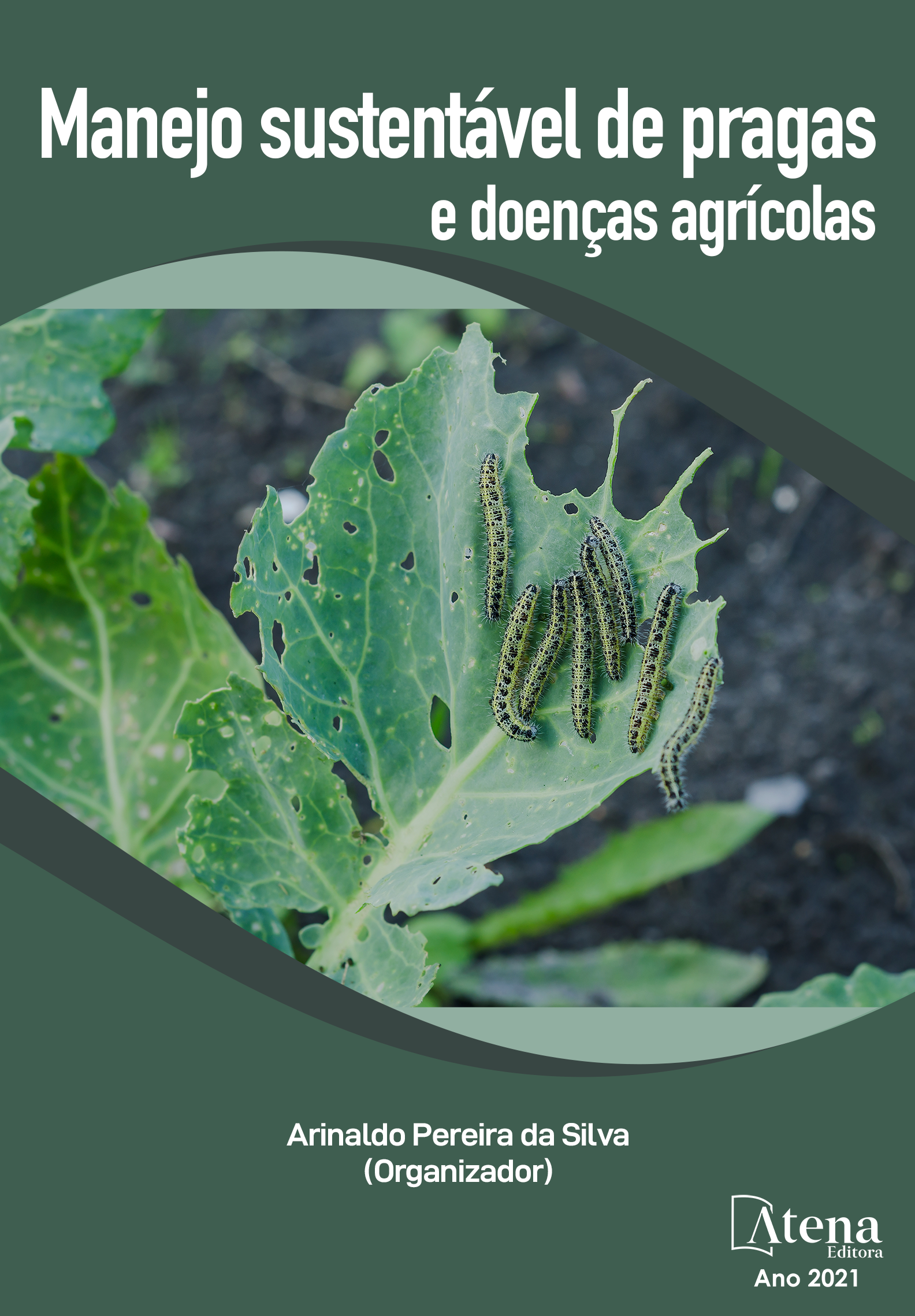
EFFECTS OF THE CONSORCIATION OF TRANSGENIC CULTIVARS OF CORN AND BEANS ON THE BEHAVIOR OF Spodoptera frugiperda (J.E. SMITH) And Bemisia tabaci (GENN.)
O estudo foi conduzido em área experimental da UENP/Campus Luiz Meneghel em Bandeirantes-PR, na segunda época de semeadura no mês de fevereiro de 2021, com objetivo de se estudar os efeitos da consorciação entre cultivares de feijão IPR-Celeiro e milho Viptera, no comportamento de controle das principais pragas de ambas as culturas. A semeadura manual e de acordo com as recomendações oficiais para cada cultura. Foram testados os seguintes tratamentos: 1) 100% milho; 2) 70% milho e 30% feijão; 3) 50% milho e 50% feijão; 4) 30% milho e 70% feijão; e 5) 100% feijão. Nas avaliações aos 14; 21; 28 e 35 DAE, foram tomadas ao acaso em cada parcela: para o feijoeiro, 10 folhas do terço superior em 10 plantas, colocadas em sacos plásticos e levadas ao laboratório para contagem do número de ninfas imóveis da mosca branca. Para o milho, 10 plantas onde foram abertos os cartuchos e contado o número de lagartas de S. frugiperda encontradas vivas. Os resultados obtidos permitiram concluir que, no modelo proposto de consorciação feijão/milho, não foram significativos no comportamento de controle das pragas de ambas as culturas. O experimento não foi conduzido até a colheita.
EFFECTS OF THE CONSORCIATION OF TRANSGENIC CULTIVARS OF CORN AND BEANS ON THE BEHAVIOR OF Spodoptera frugiperda (J.E. SMITH) And Bemisia tabaci (GENN.)
-
DOI: 10.22533/at.ed.4052109088
-
Palavras-chave: Manejo integrado, método de controle, pragas primárias
-
Keywords: Integrated management, control method, primary pests
-
Abstract:
The study was conducted in an experimental area of UENP/Campus Luiz Meneghel in Bandeirantes-PR, in the second sowing season in February 2021, with the objective of studying the effects of the association between IPR-Celeiro and Viptera maize cultivars, on the control behavior of the main pests of both crops. Manual sowing, according to the official recommendations for each crop. The following treatments were tested: 1) 100% corn; 2) 70% corn and 30% beans; 3) 50% corn and 50% beans; 4) 30% corn and 70% beans; and 5) 100% beans. In the evaluations at 14; 21; 28 and 35 DAE, were taken at random in each plot: for the bean, 10 leaves of the upper third in 10 plants, placed in plastic bags and taken to the laboratory to count the number of still nymphs of the whitefly. For corn, 10 plants where the cartridges were opened and counted the number of Caterpillars of S. frugiperda found alive. The results obtained allowed us to conclude that, in the proposed bean/corn concorporating scheme, the results were not significant in the pest control of both crops. The experiment was not conducted until harvest.
-
Número de páginas: 11
- Ana Beatriz Cerqueira Camargo
- Jose Celso Martins


